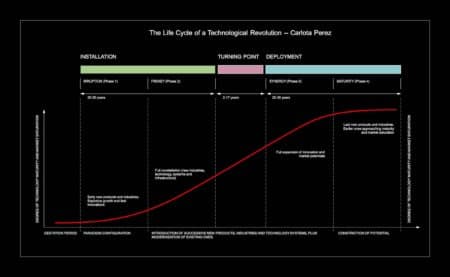Continued from page 1
Early Warning Signs for Revit
In their response to the Revit open letter and its lack of development for architects, Autodesk writes, “Like any company, we have finite resources and we make investment decisions and trade-offs based on our understanding of customer and industry needs.” Autodesk explained that it focused resources in Revit on meeting the needs of engineers and construction professionals. The rationale that in order to maximize value to the whole of the AEC market, “we must enable all major stakeholders to participate in the BIM process,” only really proved one thing to industry observers and signatories of the open letter. And that is—the AEC market is too big for any one company, even a giant like Autodesk…for any giant.
Autodesk’s new admission was the OpenBIM philosophy’s best explanation for its existence. For those who don’t know, the OpenBIM philosophy is embraced by AEC software companies who champion open industry standards for data and file interoperability, believing that the whole of the AEC industry is best served not by the sheer dominance of one player but by a federation of best-in-breed solutions that can work together seamlessly around industry standards like the IFC file format. Andrew Anagnost will tell you his view of such open industry formats in the next article, and his rationale may surprise you.
…if you go to the cloud with that mentality, I just don’t see how that helps the industry.
Sure, Autodesk has enjoyed—and continues to do so—de facto file format dominance in the CAD industry thanks to AutoCAD. And to the observer, it has seemed they have wanted to parlay that success with the RVT format as well. lain Godwin offers a pointed observation. “If you are Autodesk—take interoperability for example—they see proprietary formats as a way to make money. First, it was with DWG, then it was RVT, and now you pay to get a hold of their API in the cloud. To me, as someone who has seen this play out before, neither of those moves has been healthy for the industry.”
Godwin here is stating a non-obvious factor in the existence of the Revit open letter. Perhaps the first sign there would one day be a Revit open letter was when the ODA reverse-engineered the AutoCAD file format and then the RVT format. Godwin says Autodesk’s vision of proprietary isn’t just unhealthy for the industry in getting other people engaged in a proper interoperable world, he warns, “if you go to the cloud with that mentality, I just don’t see how that helps the industry.”
Advertisement
Autodesk has long been expressing that it realizes that the AEC industry is just too big for any one company or platform. But they have been late in backing up that statement. Consequently, signatories of the open letter were keen to point out that they need better IFC support and better interoperability and adherence to industry standards. And in a surprise move by Autodesk, the company announced it had joined the ODA as its first clear signal that it was taking the feedback from the Revit open letter signatories seriously.
Bespoke Development and AAD
The ODA and its struggles to provide the whole of AEC with interoperability options isn’t the only early warning sign for Revit. Bespoke software development and algorithms-aided design (AAD) tools like Rhino + Grasshopper offer proof that one company cannot respond to both the breadth and depth of requirements in AEC. Once computational design moved from its first phase and off of pure complex form-making to using computation to solve specific problems, the writing was on the wall: bespoke and AAD tools were being developed to provide ever-deepening levels of competence for firms with market segment expertise.
Bespoke development has emerged roughly at the same time as starfish formation expansion with particular BIM rivals. Within the overall lifecycle of any Techno-Economic paradigm—from steam and rail, the automobile and mass production, or ICT—successive new products and technology emerge to form a full constellation and then further expansion. Additionally, Perez’s theory says within any new Techno-Economic paradigm shift, the modernization of existing technologies takes place in the late “installation” and early “deployment” phases. We are just now truly modernizing construction, bringing ICT to truly bear on and transform the contractor’s sphere. This reinforces our sense of our current location in this theoretical model. (see image below).

05 – In each technological revolution, progress passes through four distinct recognizable phases, divided into two major phases by a specific period known as the Turning Point. To understand the full theory model we encourage you to read our article here. Pertinent to this article, the “contech” boom emerging—something Autodesk has been recently engaged—exemplifies a “full constellation” (formation) of the “installation” of ICT technologies into construction. This will be explained more fully in the final third feature in this series.
“There are just too many pieces of the jigsaw that are outside the Autodesk ecosystem,” says Godwin. “It cannot deal with all the pieces of data that move about. You have cities of the future [smart cities], you have the Internet of Things (IoT), and you have this massive world in the digital twin environment.” All of this, Godwin contends is “just out of scale with the piece that Autodesk is trying to ferry everybody down.”
Empathy Precedes Trust
The final pre-revolt factor behind the open letter is the sense that Autodesk wasn’t interested in listening to its architecture customers. After earlier attempts led to no serious response, the British group decided to take their voice public.
“So I think what we are talking about here is not just a disaffection of a group of architects with Autodesk,” says Eliane Lewis, of Cadventure, UK, “it’s a wider issue where they are looking through a business perspective and they see where their costs have been driven up. There is more and more emphasis on technology [in practice] and the technology stack, and a number of our clients have been going on an exercise at looking at all the technologies that they use. And we all know this is not a daisy chain, it’s like a Venn diagram isn’t it?”
Godwin says that prior to the decision to formulate the open letter, many of the UK firms were already engaged in looking at alternative BIM platforms. So the assumption that what drove the letter public was that Autodesk wasn’t willing to listen isn’t truly fitting the complete picture. We are at a point in AEC technology where productivity gains seem slow-coming. Still, the open letter’s section on Microsoft’s cultural transformation under Satya Nadella is important and speaks to the importance of listening and empathy. Let me quote again the letter’s Nadella quote, from Nadella’s book, “Hit Refresh: The Quest to Rediscover Microsoft’s Soul and Imagine a Better Future for Everyone.”
“First we needed to obsess about our customers. At the core of our business must be the curiosity and desire to meet customers unarticulated and unmet needs with great technology. There is no way to do that unless we absorb with deeper insight and empathy what they need.”
What the Revit open letter customers expressed as their first need was “a vision, roadmap and investment strategy that targets adding value and performance for design-based organizations that prioritizes the replacement of Revit from the ground up to reflect the functionality needed for a 21st-century digital industry.”
Advertisement
They also expressed clearly the immediate need for better IFC support as well as geometry support and alignment with international data standards. And then next they wanted engagement and a cultural partnership. If you look at these major things, they essentially boil down to “democratization.”
These companies are not asking for Autodesk to be a smaller player; they enjoy being partnered with the industry giant. To use an analogy, if Autodesk is perceived as Rome, they enjoy being a part of the empire, they just don’t want to live under a Caesar. They want a Republic.
What might that analogy mean in practical terms? Well, there are relationship issues and technology issues. Autodesk has already begun in earnest to address the former. The latter issue is the subject of exploration in the next two articles.
Next Page: What’s Beyond Revit — Anagnost on Autodesk AEC Futures




Reader Comments
Comments for this story are closed